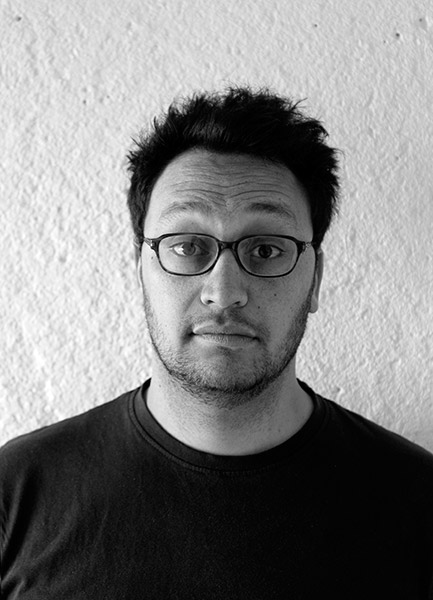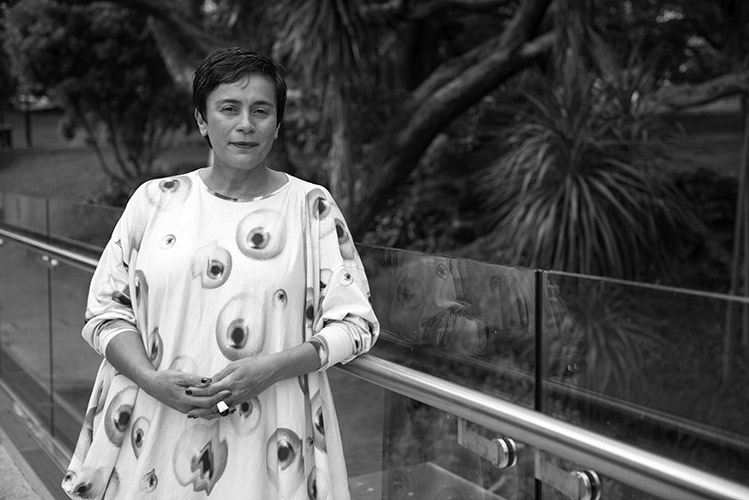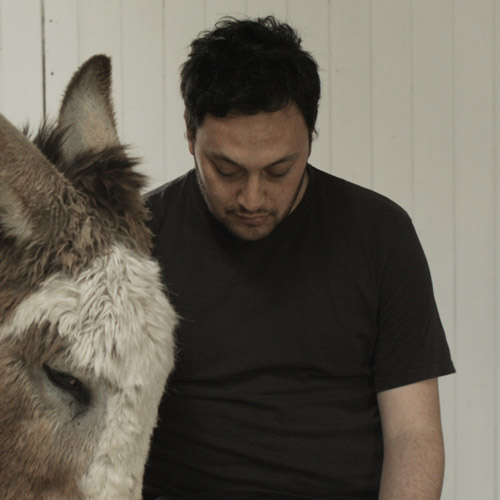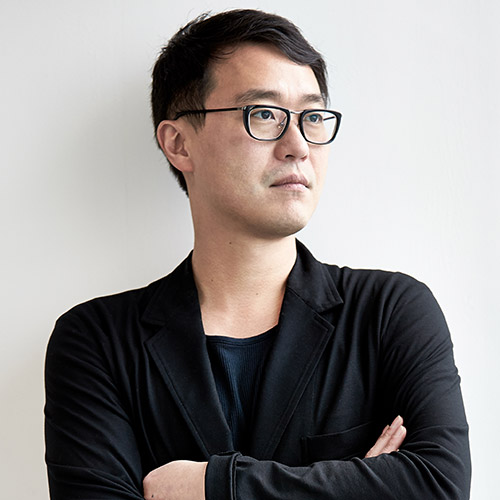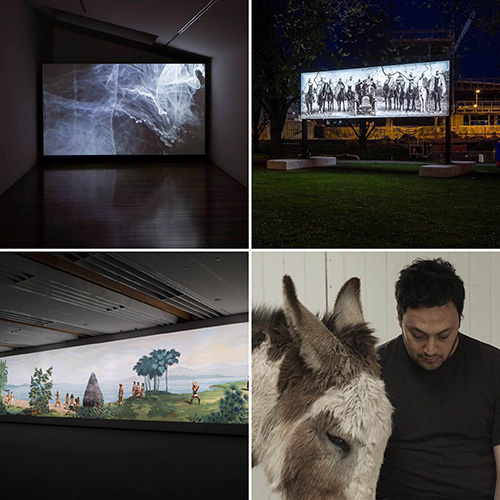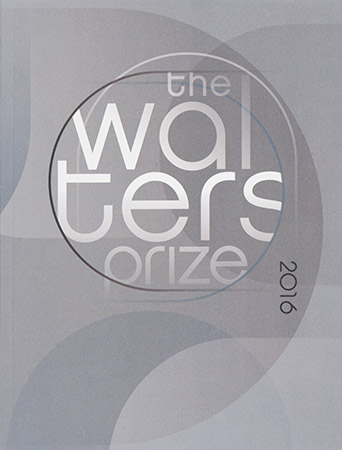—
exhibition Details
New Zealand's contemporary art award, the Walters Prize returns to the Gallery in 2016 for its eighth iteration.
Named in honour of pioneering modernist painter Gordon Walters (1919–1995), the Walters Prize is awarded for an outstanding work of contemporary New Zealand art produced and exhibited during the past two years. The biennial Prize aims to make contemporary art a more widely recognised and debated feature of cultural life.
Previous winners were; Yvonne Todd for Asthma and Eczema (2002), et al. for restricted access (2004), Francis Upritchard for Doomed, Doomed, All Doomed (2006), Peter Robinson for ACK (2008), Dan Arps for Explaining Things (2010), Kate Newby for Crawl out your window (2012) and Luke Willis Thompson for Inthisholeonthisislandwhereiam (2014).
Winner
Finalists
International Judge
Judge's statement
Jury
Jury statement
Winner
The Walters Prize 2016 was awarded to Shannon Te Ao for his presentation of Two shoots that stretch far out 2013–14 and Okea ururoatia (never say die) 2016. The winner was announced by international judge Doryun Chong at a dinner on Friday 30 September 2016.
Finalists
- Joyce Campbell, nominated for Flightdream, 2015, exhibited at: Two Rooms, Auckland, 24 September – 24 October 2015. Exhibiting Flightdream II, 2016 and He Miro, The Thread, 2013
- Nathan Pohio, nominated for and exhibiting Raise the anchor, unfurl the sails, set course to the centre of an ever setting sun!, 2015, first shown at: SCAPE Public Art, SCAPE 8: New Intimacies, Christchurch, 3 October – 15 November 2015
- Lisa Reihana, nominated for in Pursuit of Venus [infected], 2015, exhibited at: Auckland Art Gallery Toi o Tāmaki, 2 May – 30 August 2015. Exhibiting Tai Whetuki – House of Death Redux, 2016
- Shannon Te Ao, nominated for and exhibiting Two shoots that stretch far out, 2013–14, first shown at: 19th Biennale of Sydney: You Imagine What You Desire, 21 March – 9 June 2014. Also exhibiting Okea ururoatia (never say die), 2016
International Judge
Doryun Chong was appointed in July 2013 as the inaugural Chief Curator at M+, a new museum of visual culture, which will open its Herzog and de Meuron-designed building in 2019 in the West Kowloon Cultural District in Hong Kong. In January 2015, he was promoted to Deputy Director and Chief Curator, M+. He oversees all curatorial activities and programs including acquisitions, exhibitions, learning and public programs, and digital initiatives encompassing the three main disciplinary areas of design and architecture, moving image, and visual art. The most recent exhibitions he co-curated include Mobile M+: Live Artand Tsang Kin-Wah: The Infinite Nothing, Hong Kong’s participation in the 2015 Venice Biennale.
Prior to joining M+, Chong was Associate Curator of Painting and Sculpture at MoMA, where he organized projects including the critically acclaimed exhibition, Tokyo 1955–1970: A New Avant-Garde (2012) and acquired a diverse range of works, many of them non-western, for the museum’s collection. From 2003 to 2009, Chong held various positions as curator in the Visual Arts department at the Walker Art Center in Minneapolis. Some of the exhibitions he organized at the Walker include: House of Oracles: A Huang Yong Ping Retrospective (2005); Brave New Worlds (2007); Tetsumi Kudo: Garden of Metamorphosis (2008); and Haegue Yang: Integrity of the Insider (2009). His writings have appeared in journals such as Artforum, Afterall, The Exhibitionist, and Parkett, and international museum and biennale publications by the Auckland Triennial, the Gwangju Biennale, the Sharjah Biennial, Mori Art Museum, Tokyo, and National Museum of Modern And Contemporary Art, Korea. He has served on numerous prize juries, including recently the Hugo Boss Prize, Absolut Art Award, and Contemporary Chinese Art Award. He is currently serving as one of five curatorial 'Companions' for the 57th Carnegie International, scheduled to open in 2018 in Pittsburgh, Pennsylvania.
Judge's statement
You ascend two flights of stairs and enter the exhibition gallery to find a crowded, rather unkempt nursery. It is a work [Okea ururoatia (never say die) 2016] by Shannon Te Ao. At a closer look, you realise that these plant lives squatting together cheek-by-jowl in the center of the room are probably not meant to live alongside one another. Orchids next to succulents next to cacti, etc. Is this a strange asylum for plant migrants? Is this a wry statement on the artificial nature of human manipulation of protecting and preserving nature? The somewhat unsettling overgrowth seems to lead to, or to be audiences for the nearby video, Two shoots that stretch far out, which shows a human being – the artist – in deadpan, at times awkward communions with (mostly) domestic animals. Why this vaguely callous intrusion into the animals’ personal space (that poor wallaby!)? But animals respond mostly with indifference. What are the animals thinking? Do they think? Do they have a consciousness? You hear the artist reciting certain lines with his soothing baritone voice. Although his inflections are restrained, the quality of the words morphs as he repeats the lines five times, from intrigue to recognition to melancholy...
...meaningful repetition does not happen often enough in life, so perhaps we have to expect it in art. And this is what I felt I found as Shannon uttered those agonizing words, in a seemingly expressionless way. I listened to them, then again, and then again. I felt I could hear then hundreds of emotions. Though I cannot be totally sure, I was intrigued, touched, and moved. As I left the space of his art, I felt as if I had not only teleported but also had been transformed. I imagined him citing those lines to the end of time, with the rabbits, ducks and chickens, wallaby, swan, and donkey by his side, while the plants wither and die, and come back to life again, and then again.
I would like to thank him for helping me remember that a powerful work of art is sometimes created by an elegant formula of a simple gesture and repetitions. It is my distinct pleasure and privilege to announce that the winner of the 2016 Walters Prize is Shannon Te Ao.
Jury
- Emma Bugden, Editor, Small Bore Books and former curator at The Dowse Art Museum, Lower Hutt
- Peter Robinson, Walters Prize 2008 winner and Associate Professor at Elam School of Fine Arts, The University of Auckland
- Dr Lara Strongman, Senior Curator, Christchurch Art Gallery Te Puna o Waiwhetu
- Nina Tonga, Curator of Pacific Cultures at Museum of New Zealand Te Papa Tongarewa, Wellington.
Jury statement
The last two years in New Zealand contemporary art practice have been intensely productive. Over this period, we’ve observed art engaging in a variety of ways with our rapidly changing economic and environmental situation. Artists have challenged orthodox knowledge systems, and provided new ways of seeing and thinking about problems of contemporary life. Many significant new bodies of work have been exhibited over this period.
The four artworks we’ve selected as Walters Prize finalists in 2016 are all extraordinary and will continue to shape the course of art in years to come. Variously political, poetic, enigmatic, seductive and confrontational, each engages with New Zealand’s history through strategies that question and re-imagine our present. Conceived with a sophisticated awareness of art’s own recent developments, these projects argue for art’s autonomy at the same time as being embedded in the social and situational. Their impact has helped to advance the conversations of art throughout Aotearoa New Zealand.
Joyce Campbell’s Flightdream is a 25-minute video loosely based on a short story by science fiction novelist Mark von Schlegell (USA/Germany), which is in itself a response to Campbell’s earlier series of photographs, Marianas. In Campbell’s immersive video, sculptural objects are subjected to corrosion through an electrochemical process: sheets, webs and traces of matter separate from one another, drift and entangle. The destruction begets new complex forms, which emerge and disappear. The viewer is placed in a situation of utter disorientation (the story has a nameless protagonist descending into the depths of the ocean in search of a monster and the protagonist’s own inevitable destruction). Accompanied by an industrial soundscape by experimental noise guitarist Peter Kolovos, and with a near painterly use of light, Flightdream is a meditation on the relationship between projection and perception – how we make sense of what we see. It also reflects on people’s interaction with volatile and hostile environments that are in the process of transformation.
Nathan Pohio’s Raise the anchor, unfurl the sails, set course to the centre of an ever setting sun! is one of the most resonant and sharp works to come out of the highly-charged political and cultural situation of the Christchurch rebuild, following the devastating earthquakes in 2010 and 2011. Pohio has used an image by an unknown photographer from 1905, depicting Ngāi Tahu leaders in full ceremonial dress on horseback flanking the Crown’s representatives of the time, Lord and Lady Plunket, in their motor car on their way to Tuahiwi – where a kete was presented to Lady Plunket and the Ngāi Tahu claim brought to vice-regal attention. Pohio presented the image on a monumental scale as an illuminated free-standing billboard on the riverbank, between a city block owned by Ngāi Tahu and the regenerating CBD controlled by the Crown. At a time when so much of the city is being rebuilt and new identities established, this work confronts and contests the histories that are embedded in the land. A quiet and powerful conceptual intervention that reasserts the cultural landscape of Otautahi Christchurch, Pohio’s work is infused with the drawling grandeur of popular western film history.
In her second appearance among Walters Prize finalists, Lisa Reihana’s ambitious multi-channel video work represents a major shift in her practice. The product of years of research and technical development, Reihana’s in Pursuit of Venus [infected] recreates Les Sauvages de la Mer Pacifique, Joseph Dufour’s scenic wallpaper from 1804, as the panoramic background for a restaging of encounters between Pacific and European peoples. The work is immersive, conceived on a monumental scale. It is rich and sumptuous. It is exquisite. It lures you in, and then bites you with its violence. There are moments in this work that are politically and socially tough, even with the distance of time. The work challenges orthodox ideas and dispels stereotypes in historical representation, repurposing an artefact of the colonial period. Reihana imbues in Pursuit of Venus [infected] with the great strength of the agency of Māori and Pacific people – reimagining and redefining the way global histories are understood.
In a deceptively simple video – beautiful, heartfelt and absurd – Shannon Te Ao declaims a traditional waiata (song) to a menagerie of animals, including geese, a swan, rabbit, chicken, a wallaby and a donkey. Here a woman’s lament of personal loss is transformed into a more poetic and ambiguous yearning. The title of the work is drawn from a whakatauki (proverb), standing as an analogy for relationships that are potentially flawed and growing distant. The whakatauki is also used to describe people's search for their own sense of belonging. Te Ao’s video traces the difficulty of meaningful connection with another being; it is not easily summed up, but provides a compelling emotional experience and engages critically with contemporary problems of communication. Two shoots that stretch far out promotes the continued use and relevance of traditional whakatauki/waiata as a means of processing and understanding the challenges of the present.
- Date
- —
- Curated by
- Natasha Conland
- Location
- Level 2
- Cost
- Free entry
